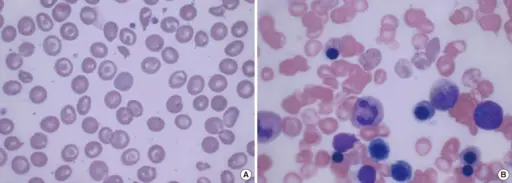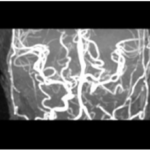B Thalassemia minor is asymptomatic with mild or absent anemia.
What is the Pathology of B Thalassemia Minor?
The pathology of β- thalassemia minor is:
-Etiology: The cause of β- thalassemia minor is a genetic mutation.
-Genes involved: β-thalassemia gene.Heterozygotes having one β-thalassemia gene and one normal gene (β+/β or β0/β) usually have mild microcytic anemia that causes no symptoms.
Pathogenesis: The sequence of events that lead to β- thalassemia minor result from promoter region mutations, preventing RNA polymerase from binding normally. Chain terminator mutations causes premature termination of mRNA translation: Splicing mutations, aberrant splicing affecting the introns and exons. Diminished β-globin synthesis consequences in anemia, by fabricating under-hemoglobinized, hypochromic, microcytic red cells that have diminished survival.
-Morphology: The morphology associated with β- thalassemia minor shows hypochromia, microcytosis.
-Histology: The histology associated with β- thalassemia minor shows basophilic stippling and target cells.
How does B Thalassemia Minor Present?
Patients with β- thalassemia minor typicallyhave no sex prevalrence present at age range of childhood and adulthood. The symptoms, features, and clinical findings associated with β- thalassemia minor include mild anemias, and asymptomatic.
How is B Thalassemia Minor Diagnosed?
β- thalassemia minor is diagnosed through lab works peripheral blood smear- abnormal red cells, hypochromia, microcytosis basophilic stippling, and target cells. Hemoglobin electrophoresis shows increase in HbA2.
How is B Thalassemia Minor Treated?
β- thalassemia minor is treated via management of symptoms, if any.
What is the Prognosis of B Thalassemia Minor?
The prognosis of β- thalassemia minor is good. Patients are asymptomatic with little or no anemia.



